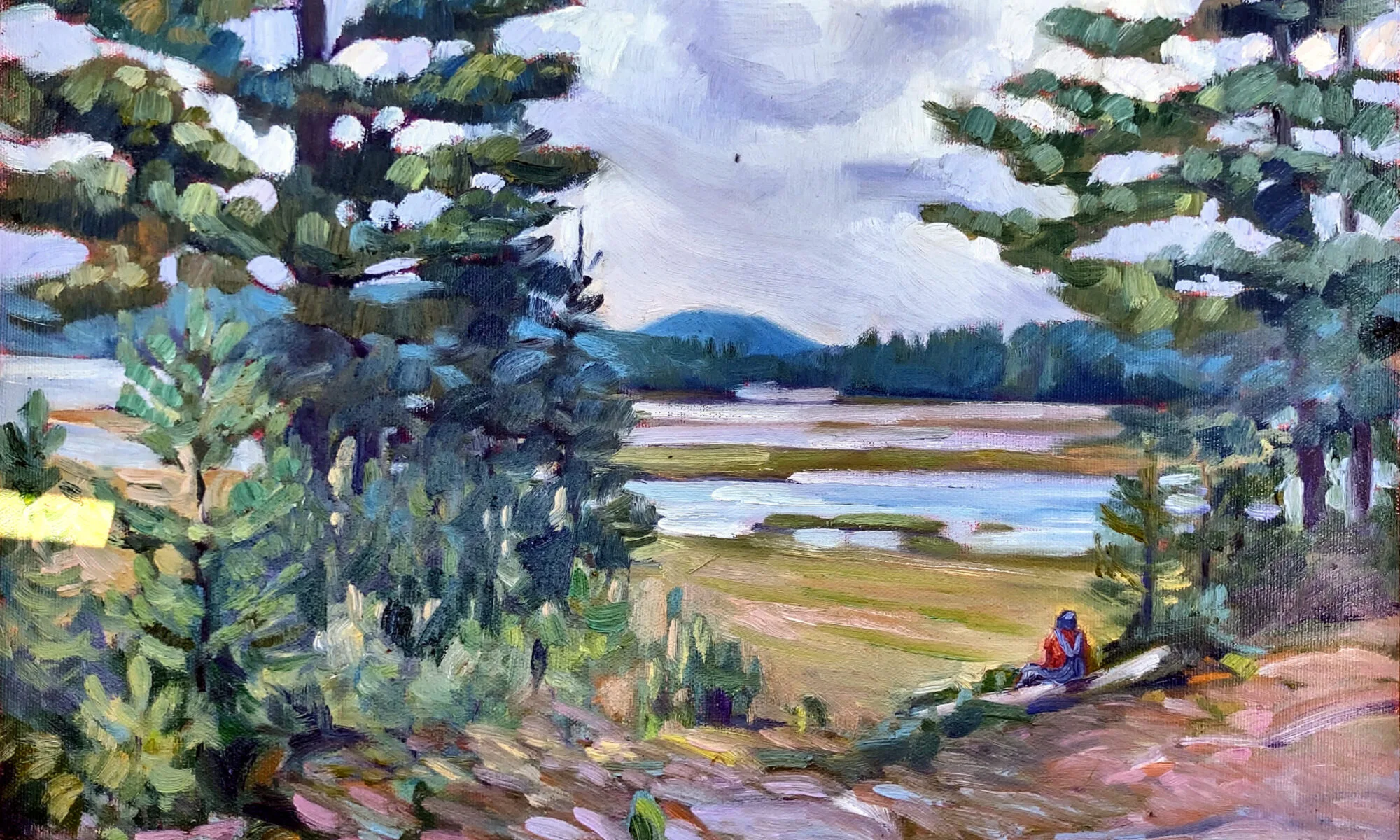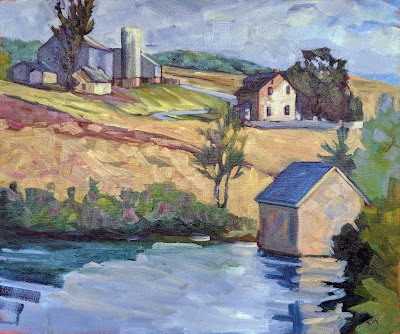It’s the season of ghosties and goblins and night hags. Try some blue for relief.
 |
Haint blue porch ceiling. Photo courtesy of Lake Lou.
|
Like many Americans, I painted my porch ceiling a soft, watery blue (when I had a porch). I knew it was originally a Southern custom, but it’s one that also has surprising traction in the Northeast. No matter what color your house is, it’s a pretty, restful detail, especially on an overcast day.
I didn’t realize that we get that tradition from
Hoodoo. That’s the folk magic of the low-country
Gullahpeople. It has African and Creole roots, overlaid by the Bible. The
Boo Hag is a regional variation of the
night hag.This is a worldwide mythological idea that gives us the modern expressions
nightmareand
hag-ridden.
 |
|
The Nightmare, 1781, by Henry Fuseli. Courtesy Detroit Institute of Arts. The night-hag was a worldwide explanation for sleep paralysis, nightmares, shortness of breath, and waking up feeling tired.
|
Hags gain strength from riding or sitting on their victims. Boo Hags, in particular, get sustenance from their victim’s breath. Because they have no skin, they’re red. So, to be less obvious, they steal human skin and wear it for as long as it lasts. Talk about disposable ‘fast fashion.’
Once the hag finds a potential victim, she gains access to the house and then hovers over her victim sucking out its breath. Of course, the hag must be back in its hole by dawn, so the victim either awakes as if out of a terrible dream, or feeling tired and out of sorts. Like my husband this morning.
Back to the blue paint. That color was originally called ‘haint blue’ and was made with the fermented leaves of the indigo plant. Adding lye causes the color to precipitate into something that can be pressed, dried and powdered and—voila! It’s a stunner of a color, still worn all over the world in the form of blue jeans.
Indigo is among the oldest dyes known to mankind, and therein lies its first mystery. Its development and manufacture originated in India and southeast Asia, but the oldest known example of indigo-dyed fabric (6000 years) was discovered in Peru.
By the time our slave trade was being developed, indigo was a plantation crop in the American south. How the paint color became a talisman to ward off haints and hags is conjecture. Either it mimicked the appearance of the sky so spirits could pass right through, or it looked like water, which ghosts couldn’t cross.
Or, there was something about the color that repelled insects. That actually might be true, although it isn’t true today. Indigo dye was made with lye, and there was lime in the historic milk (casein) base. The resultant paint may indeed have been a good bug repellent.
 |
Remnants of Haint Blue ceiling at Owens-Thomas House slave quarters. Photo courtesy of Telfair Museums.
|
The Gullah people used this beautiful blue far more liberally than we do today. They painted it on their porches, doors, window frames, shutters, even ceilings. It barred entrance, and if the haints got in, it encouraged them to scoot.
I can tell you, however, that haint blue doesn’t repel the short, costumed witches, goblins and other creatures of modern Halloween. As long as we had a blue-ceilinged porch, they came out in droves, like locusts. And it was great fun.
A special thanks to Jennifer Johnson, who told me this story in painting class yesterday.


































